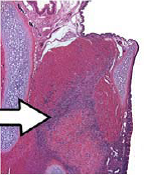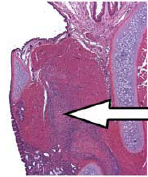Labs
Clinical and basic science researchers within the Department of Otolaryngology - Head and Neck Surgery actively contribute to the overall body of knowledge within the field. Patient-oriented investigations and biomedical research are conducted in all subspecialties: otology, rhinology, head and neck, pediatrics, laryngology, and facial plastics. The ultimate goal of this research is to improve patient care through better understanding of a variety of conditions in Otolaryngology - Head and Neck Surgery.

Voice Science and Laryngology Laboratory
Ted Mau M.D., Ph.D. (UTSW Otolaryngology-Head and Neck Surgery)




The Department offers rich opportunities in basic, applied, and clinical research in laryngology and voice science for residents. The Laryngeal Physiology and Biomechanics Laboratory is equipped for investigations of laryngeal tissue mechanics, physiology as well cell biological and acoustic aspects of voice production. The Laryngeal Tissue Engineering Laboratory focuses on biomaterial development for vocal fold tissue.
Ted Mau, M.D., Ph.D., runs a virtual laboratory to develop computational tools in laryngology. Some of the tools have been used to investigate the effect of vocal fold injections on cricoarytenoid joint motion, the 3D conformations of the injected boluses in the larynx, and the electroglottographic signal changes reflecting the voice fluctuations in adductor spasmodic dysphonia. A more recent project aims to create a laryngeal surgery planning tool based on a voice simulator developed at the National Center for Voice and Speech.
In addition to these laboratory-based projects, the UT Southwestern Voice Center has several ongoing clinical studies. These include a randomized prospective trial of the efficacy of stretch-and-flow voice therapy in the treatment of muscle tension dysphonia.
Cochlear Implant Electrode Array Lab
Kenneth H. Lee, M.D., Ph.D. (UTSW Otolaryngology-Head and Neck Surgery)
Walter Voit, Ph.D. (Materials Science and Engineering, UT Dallas)
We are developing a novel self-coiling cochlear implant electrode array with the use of Shape Memory Polymers (SMP). These arrays allow for fewer traumas during insertion. The arrays are designed to be straight at room temperature but are activated to coil to match the shape of the turn in scala tympani as it warms to body temperature during insertion. We are coupling insertion with a linear actuator to allow for a controlled robotic insertion at constant velocity that matches the shape re-conformation kinetics of the SMP.

This work compliments Dr. Lee’s earlier studies concerning growth of inner ear neural fibers associated with BDNF in furthering the utility of cochlear implants. In addition to these laboratory-based projects, Dr. Lee is involved in several ongoing clinical studies.
Head and Neck Oncology Nanoparticle Lab
Baran Sumer, M.D. (UTSW Otolaryngology-Head and Neck Surgery) - Sumer Lab
Jinming Gao, Ph.D. (UTSW Simmons Comprehensive Cancer Center) - Gao Lab

Our primary research interest is in the development of nanoparticles and nanodevices for surgical applications. Some of the primary challenges during cancer ablation surgery are differentiation of cancer from normal tissues, especially in previously treated areas, and detection and destruction of residual microscopic disease.
Recently our lab established pH transistor nanoparticles (PTN) that, in response to pH, show binary off/on behavior, remaining completely dark until exposed to a specific tuned pH where they reach 100 percent fluorescence.
The ultra-pH-sensitive property is a nanoscale phenomenon arising from the self-assembly of amphiphilic copolymers. The PTN display a dramatically sharpened pH response (∆pHoff/on< 0.15 pH, compared to 2 pH units for small molecular pH sensors). Based on inherent ability for these particles to indicate a sharp pH transition, we established a nanoprobe to fluorescently image dysregulated pH, a universal hallmark of cancer.
Critically, the binary all or nothing fluorescence, with no intermediate state, digitizes the analog biological signal or event, pH, allowing amplification without noise or distortion. These PTN have transformed tumor detection but also represent a new paradigm of digitizing an analog biological signal, opening doors to the exciting possibility of other applications in tumor imaging, delivery of therapeutics, and cellular targeting.
